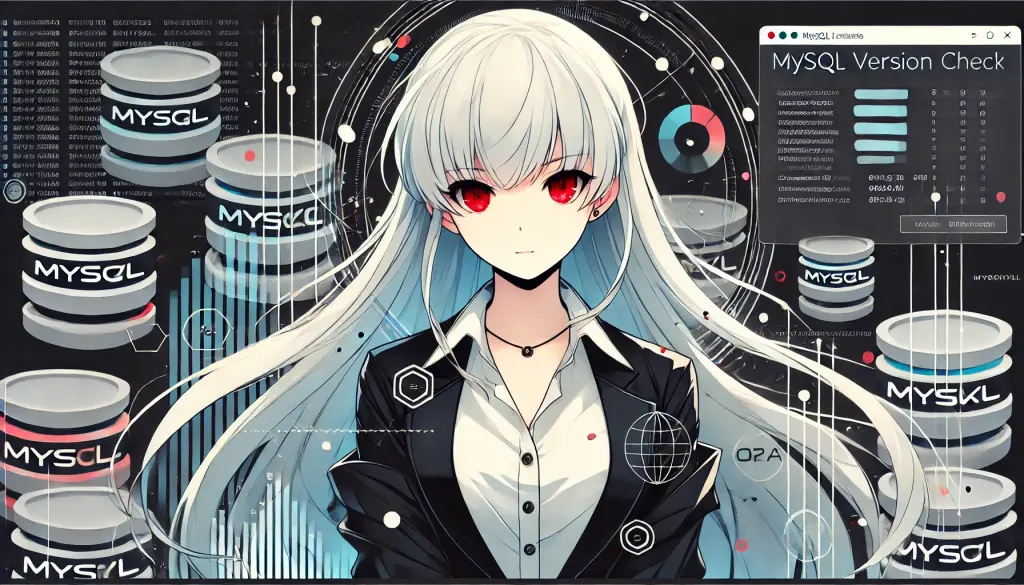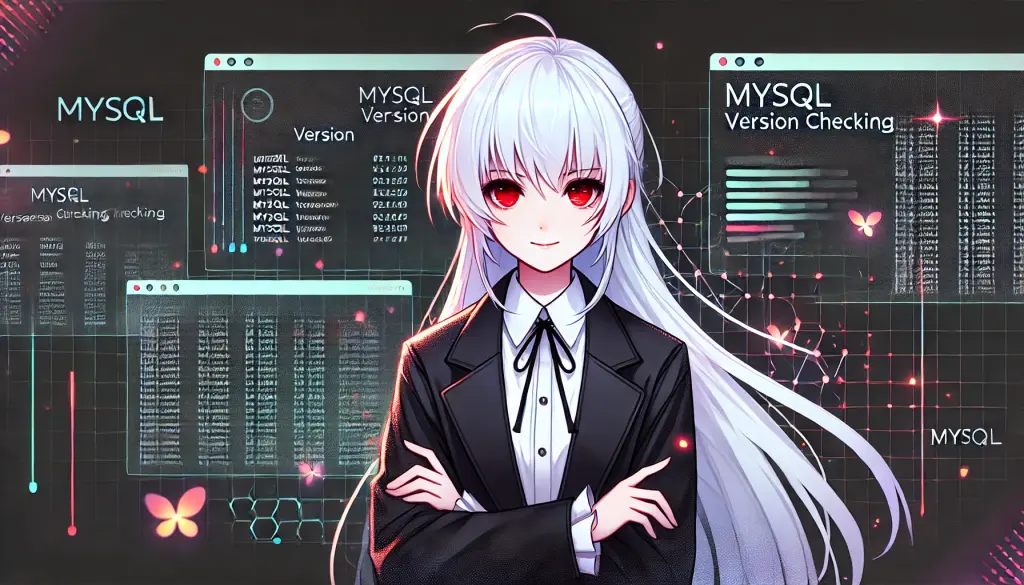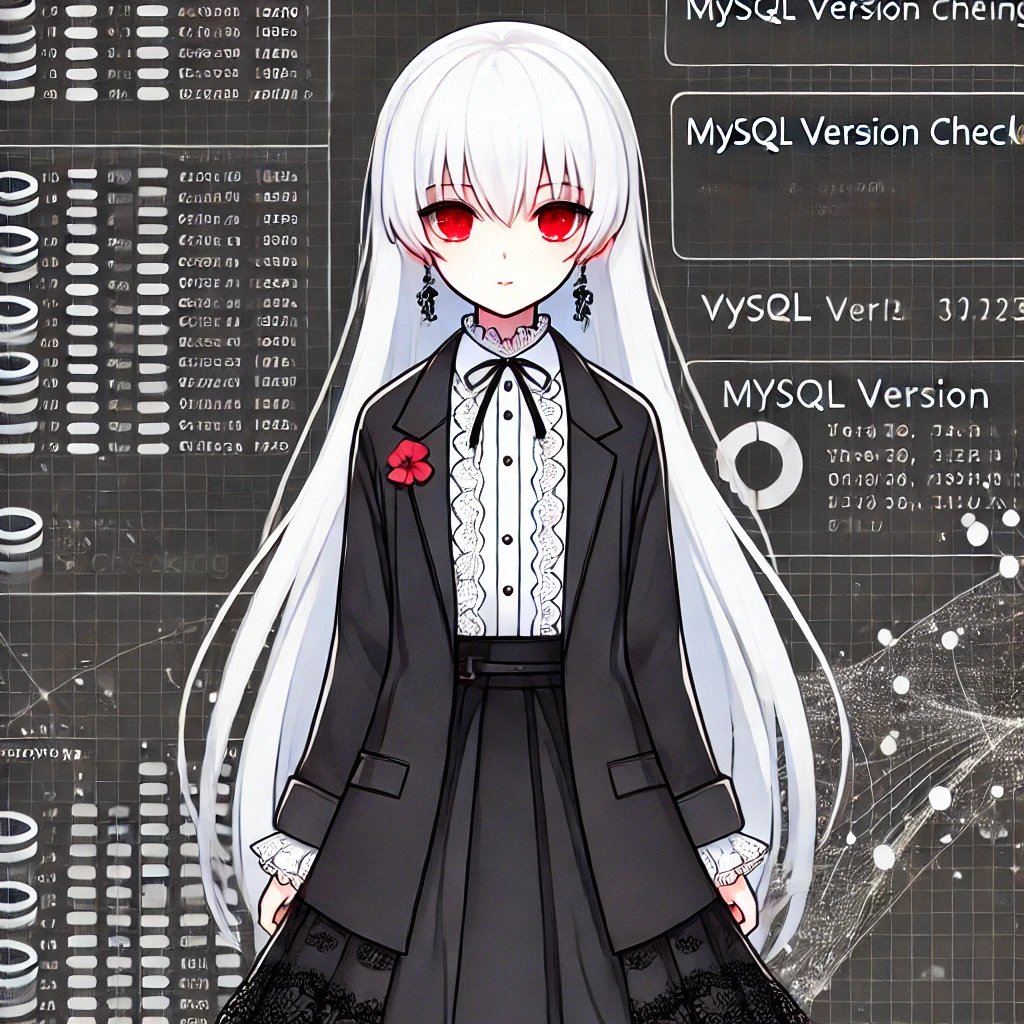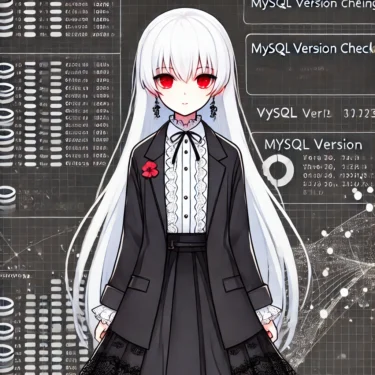- 1 1. Introduction
- 2 2. Basic MySQL Version Checking
- 3 4. Notes Regarding MySQL Versions
- 4 5. FAQ Related to Checking MySQL Version
- 5 6. Conclusion
- 6 7. References and Additional Resources
1. Introduction
Importance of Checking MySQL Version
MySQL is used as an open-source relational database management system in many web applications and sites. However, depending on the version of MySQL you are using, there may be security vulnerabilities or compatibility issues with features. Therefore, it is important to check the MySQL version and update to the latest stable version. This article will explain in detail how to check your MySQL version and why it is important.
When to Check Your Version
Checking your version is one of the tasks that should be done regularly. It is necessary to check your MySQL version, especially when you want to use new features or need to apply security updates. Checking the version is also essential during system migrations or server upgrades.
2. Basic MySQL Version Checking
2.1 Checking Version using the SELECT VERSION(); Command
The simplest way to check your MySQL version is to execute the SELECT VERSION(); SQL command. This command directly retrieves and displays the version of the MySQL server. Specifically, you would enter the command as follows:
SELECT VERSION();Execution Example and Result Explanation
Executing this command will display the MySQL version information as follows:
+-----------+
| version() |
+-----------+
| 8.0.25 |
+-----------+2.2 Checking Version using the status Command
Another method for checking the version is using the status command. This command displays MySQL status information, which includes the version information. You would execute it as follows:
statusExecution Example
--------------
mysql Ver 8.0.25 for debian-linux-gnu on x86_64
...
Server version: 8.0.25 MySQL Community Server - GPL
--------------
3. MySQL Version Checking Methods by Environment
3.1 Checking from the Command Line
The method for checking your MySQL version using the command line varies slightly depending on the OS.
Execution Steps for Mac and Windows
- For Mac
Open the terminal and execute the following command:
mysql -u root -p -e "SELECT VERSION();"- For Windows
Open the command prompt, navigate to the MySQL installation directory, and then execute the following:
mysql -u root -p -e "SELECT VERSION();"3.2 Checking in phpMyAdmin
If you are using phpMyAdmin, you can easily check the version in your web browser. Follow these steps to check:
- Log in to phpMyAdmin.
- The version is displayed in the “MySQL version” item on the right side of the screen.
- Alternatively, you can navigate to the SQL tab and execute the
SELECT VERSION();command to check.
3.3 Checking in MySQL Workbench
MySQL Workbench is a GUI tool for managing MySQL. You can also check the version with this tool.
- Open MySQL Workbench.
- Select the database you want to connect to, and the version will be displayed in the information panel on the right.
- Alternatively, you can open the SQL editor and execute the
SELECT VERSION();command to check.

4. Notes Regarding MySQL Versions
4.1 Version Compatibility and Updates
Depending on the MySQL version, certain features may be added or deprecated. Therefore, careful testing is required during updates to ensure system compatibility. Especially when migrating databases between versions, compatibility issues can arise, so it is important to check the release notes beforehand and make backups.
4.2 Backups and Test Environments for Version Upgrades
It is recommended to always take a backup before a version upgrade and confirm the operation of the new version in a test environment. This allows for quick response in the event of any trouble and helps maintain system stability.
5. FAQ Related to Checking MySQL Version
5.1 Frequently Asked Questions and Answers
- Q1: What should I do if I cannot check the MySQL version?
A: If you cannot check the MySQL version, please verify if MySQL is installed correctly and if environment variables are set up correctly. It may also be a permission issue, so try executing with administrator privileges. - Q2: What should I be careful about when upgrading the MySQL version?
A: When upgrading the version, compatibility issues may arise, so always take a backup before updating and test the operation in a test environment. It is also important to check the latest release notes and understand the changes. - Q3: What are the risks of using an old MySQL version?
A: Using an older version of MySQL may expose you to security vulnerabilities. This increases the risk of unauthorized access and data breaches, so regular updates are necessary.
5.2 Troubleshooting Tips
- If MySQL does not start, check the error logs to identify the cause.
- If a problem occurs after a version upgrade, restore from a backup so you can revert to the previous version.

6. Conclusion
Key Points for Checking MySQL Version
Checking your MySQL version is very important for both security and functionality. You can easily check it using commands like SELECT VERSION(); or status, so make it a practice to perform this regularly and aim to use the latest stable version.
Recommendation for Regular Checks and Utilizing the Latest Version
By performing regular version checks, you can reduce security risks and maximize the use of new features and optimizations. Especially to avoid security vulnerabilities, regularly check for version upgrade notifications and release notes, and update to the latest version as needed.
Towards Future MySQL Management
Since MySQL has differences in functionality and performance depending on the version, version checking and appropriate management are essential for optimal operation. Through version management, you can optimize database performance and maintain security, thereby enhancing the overall reliability of your system.
7. References and Additional Resources
- MySQL Official Documentation
The official MySQL documentation contains release notes and update information for each version. It is recommended to refer to the official documentation when checking or updating your version. - MySQL Documentation
Related Tools
- phpMyAdmin: A tool that allows you to manage MySQL in a web browser, making version checking easy.
- phpMyAdmin
- MySQL Workbench: A GUI tool that can be used for designing and managing MySQL.
- MySQL Workbench
Utilize these resources to efficiently manage and update your MySQL version.



